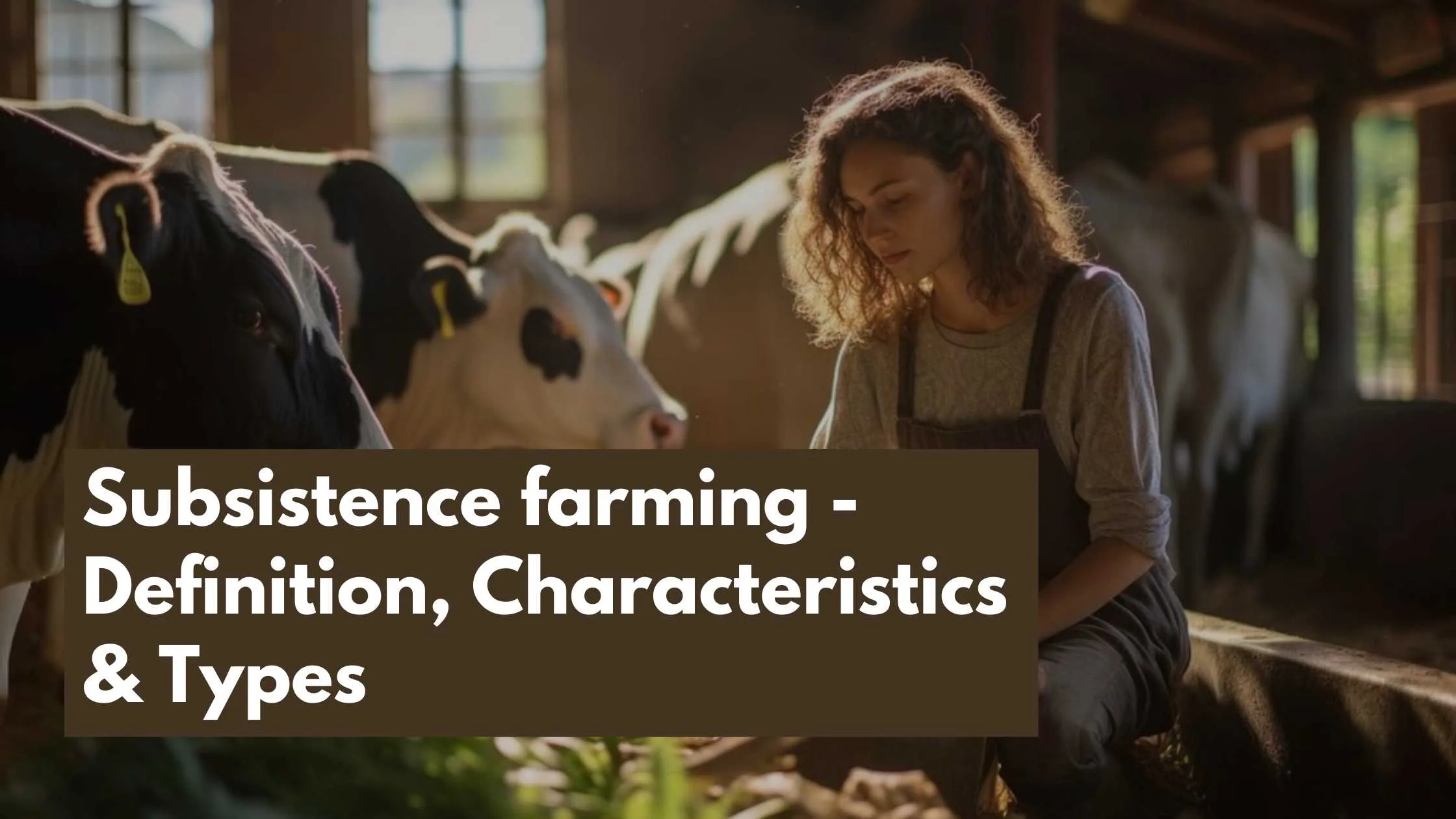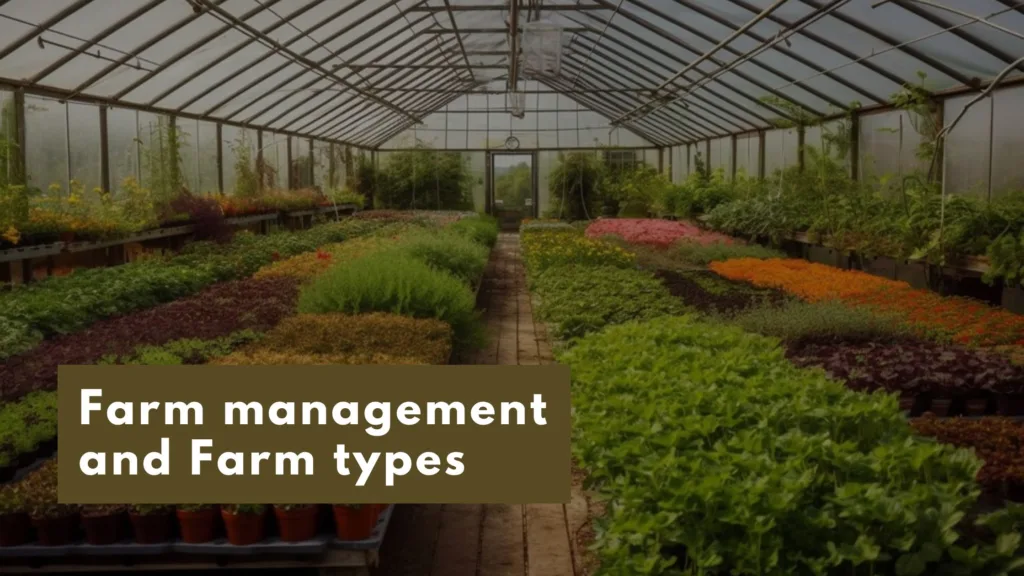What is subsistence farming?
Subsistence farming is a type of agricultural practice where farmers grow crops and raise livestock for their own consumption and survival rather than for commercial purposes.
Characteristics of Subsistence Farming –
Subsistence farming has several distinct characteristics that set it apart from other forms of agriculture:
Small Landholdings:
Subsistence farmers typically work with small plots of land, often less than two hectares, which they own or rent. They rely on intensive cultivation techniques to maximize production from these small areas.
Low-input Agriculture:
Subsistence Farming relies on traditional farming methods and low-cost inputs, such as organic fertilizers, animal manure, and natural pest control methods. Farmers often lack access to modern technologies and agricultural inputs, such as synthetic fertilizers and pesticides.
Diversified Farming Systems:
Subsistence farmers often grow a variety of crops, including staple crops such as rice, maize, and wheat, as well as vegetables, fruits, and cash crops. Livestock rearing is also an important component of farming. On the other hand, diversified farming benefits can also be considered in order to gain a variety of benefits.
Limited surplus production:
The primary goal of subsistence farming is to produce enough food to meet the needs of the farmer and their family, with any surplus production sold or exchanged in local markets. If you want to know, what does a food surplus mean? then read further.
Vulnerability to environmental shocks:
Subsistence farmers often live in areas prone to environmental shocks such as droughts, floods, and pests. As a result, they must have adaptive strategies to cope with these challenges.
Labor-intensive:
Subsistence farming is labor-intensive, and farmers often rely on family labor or sharecroppers to work their land. This can result in high workloads for family members, including women and children.
Limited access to markets:
Subsistence farmers often live in remote areas with limited access to markets, which can make it difficult to sell their surplus production or access modern agricultural inputs and technologies.
Types of Subsistence Farming –
Subsistence farming is a type of agricultural practice where farmers produce only enough food to meet their family’s needs without any surplus for commercial purposes. The following are the different types of farming:
Intensive subsistence farming:
In this type of farming, farmers cultivate small plots of land using labor-intensive methods such as hand tools and human labor. This type of farming is common in densely populated areas where land is scarce.
Shifting cultivation:
Also known as slash-and-burn agriculture, this type of farming involves clearing and burning a plot of land, planting crops, and then moving on to a new plot of land when the soil is no longer fertile. It is commonly practiced in tropical regions.
Pastoral nomadism:
This type of farming involves raising livestock, such as cattle, sheep, or goats, and moving them from one place to another in search of pasture and water. It is common in arid and semi-arid regions where vegetation is scarce.
Hunter-gatherer subsistence farming:
This type of farming involves hunting wild animals and gathering fruits, nuts, and roots from the natural environment. Indigenous peoples in various parts of the world practice it.
Terrace farming:
In this type of farming, farmers construct terraces on steep hillsides to create flat areas for planting crops. This type of farming is common in mountainous regions where land is limited.
Each type of subsistence farming has its own unique characteristics, challenges, and benefits.
Conclusion
In conclusion, subsistence farming refers to a type of agriculture in which farmers produce crops and livestock primarily for their own consumption or for their local community. It is often characterized by small-scale, low-tech methods and a focus on meeting basic needs rather than maximizing profit.
Subsistence farming can be classified into two main types: shifting cultivation and intensive agriculture. Shifting cultivation involves rotating crops and fallow periods in order to maintain soil fertility, while intensive subsistence agriculture involves the use of high labor inputs and efficient land use to produce crops on a small scale.
Despite its importance in providing food security for farmers, subsistence farming faces many challenges, including land degradation, climate change, and the growing demand for commercial agriculture. Nonetheless, it remains a critical way of life for many rural communities and an important aspect of global food systems.




I’ve always been curious about subsistence farming and its different types. Looking forward to diving into this post to learn more about it!
I’m thrilled to hear about your curiosity regarding subsistence farming and its various types! You’re in for an enlightening read. Our post aims to provide a detailed exploration of subsistence farming, covering its different types and shedding light on its significance. Thank you for your interest, and I hope you find the information valuable and engaging!
Subsistence farming sounds like a true testament to self-sufficiency! Can’t wait to learn more about its definition, characteristics, and types.
Absolutely! Subsistence farming indeed embodies the essence of self-sufficiency. It’s a fascinating topic, and I’m glad you’re eager to learn more about its definition, characteristics, and types. In the upcoming post, we’ll delve into all these aspects to provide a comprehensive understanding of subsistence farming. Stay tuned for more insights, and thank you for your enthusiasm!
It’s interesting to delve into the world of subsistence farming and learn about its various aspects. Great insights!
It’s fascinating to learn about the different aspects and types of subsistence farming. Really broadened my understanding of agricultural practices!